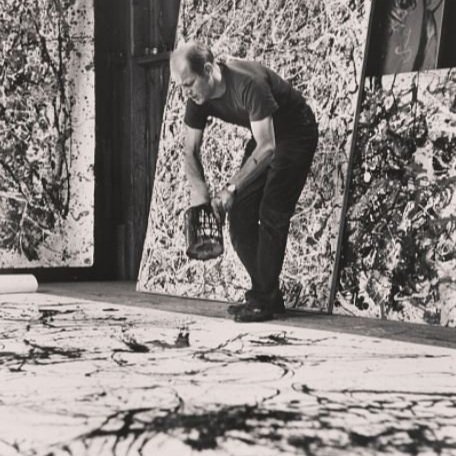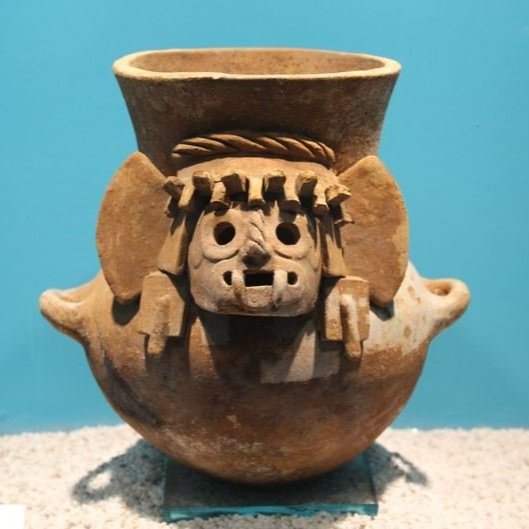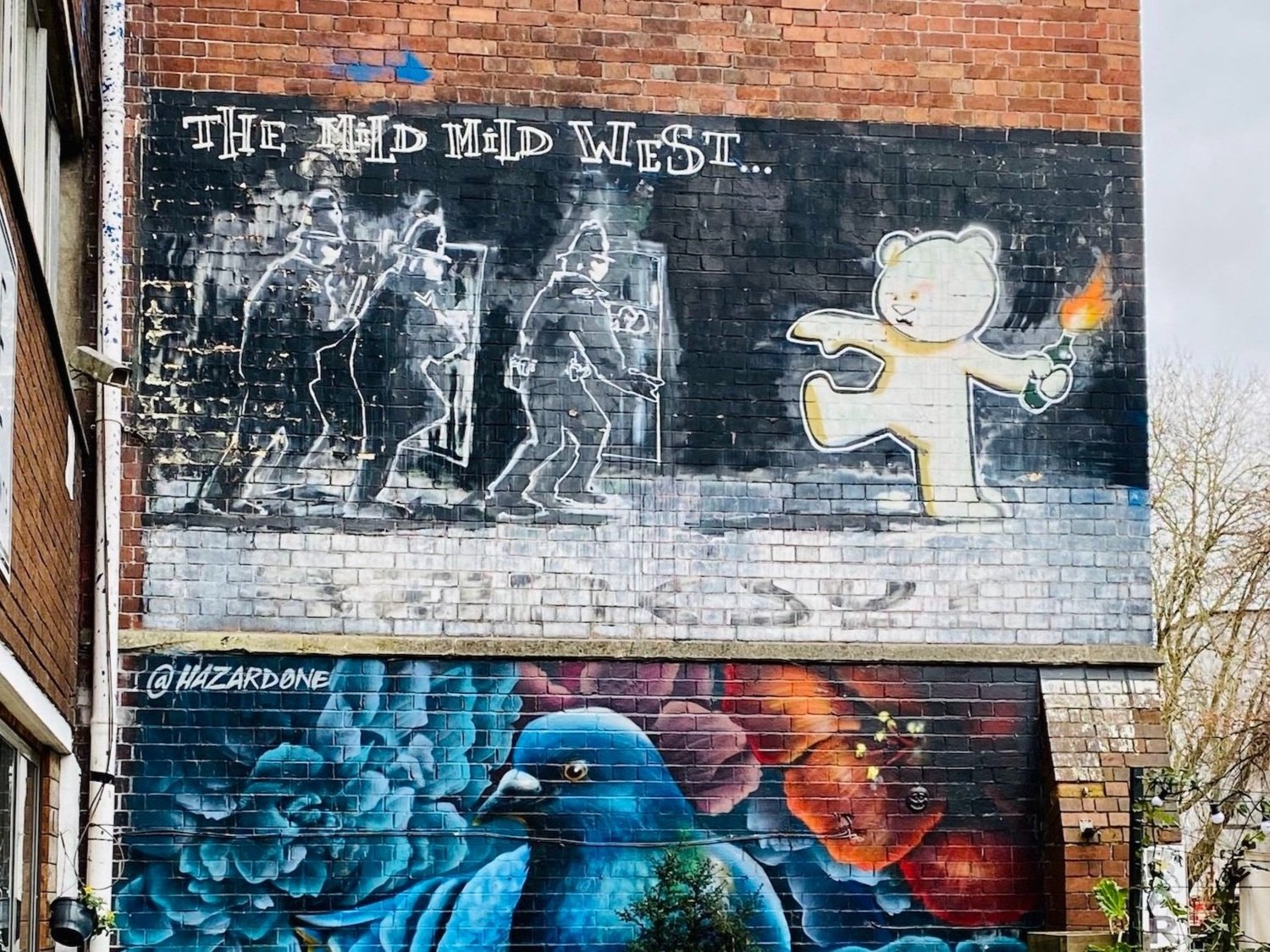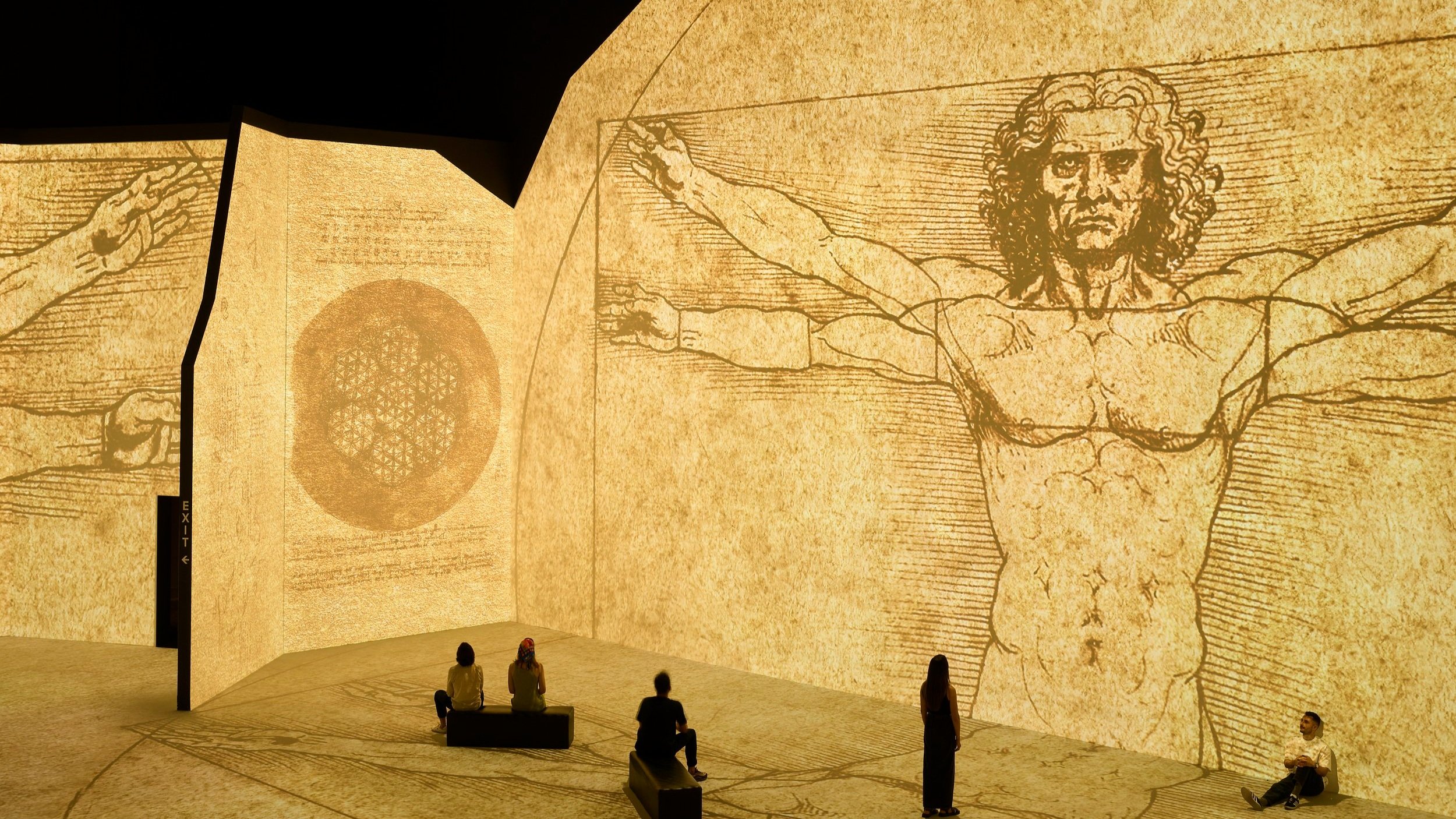How Did Jackson Pollock Create His Paintings?
National Portrait Gallery, Smithsonian Institution; Estate of Hans Namuth
Jackson Pollock, an enigmatic figure in the world of art, defied conventions and redefined creativity through his innovative painting techniques.
Pollock’s artistry was marked by a departure from traditional methods. His bold experimentation with materials and techniques challenged the status quo, inviting viewers to perceive art in new and unconventional ways.
At the heart of Pollock’s artistic process was the physicality of creation. He immersed himself in the act of painting, utilising his entire body, giving his artworks a sense of movement, energy, and raw emotion.
In this article, I explore Pollock’s artistic process, shedding light on the elements that made his approach truly unique.
Table of Contents
1. Jackson Pollock's Artistic Journey
2. Preparation: Crafting Chaos on Canvas
3. Physicality and Gesture: Painting as a Choreographed Performance
4. Visual Complexity: A Kaleidoscope of Layered Energy
5. Intuition and Emotion: Pollock’s Inner World
6. Process Over Product: Capturing the Essence of the Moment
7. Titles: Numerical Titles Allowing for Personal Interpretation
1. Jackson Pollock’s Artistic Journey
Jackson Pollock’s artistic journey was one of evolution and innovation, marked by a series of transformative phases that ultimately led to the creation of his revolutionary painting techniques.
Pollock’s early artistic endeavors were characterised by a familiarity with traditional techniques. He initially honed his skills through academic training, developing a foundation in figurative art. However, as his career progressed, Pollock’s insatiable curiosity led him to explore uncharted territories in the realm of creativity.
A pivotal moment in Pollock’s journey occurred when he encountered the tenets of abstraction. Embracing this artistic philosophy allowed him to break free from the constraints of realism and delve into the world of emotions, energy, and the intangible. Abstraction liberated Pollock’s creative spirit, enabling him to communicate on a deeper, more visceral level.
Herbert Matter. Jackson Pollock at the Art of This Century gallery, 1947. Jackson Pollock and Lee Krasner papers, circa 1914-1984. Archives of American Art, Smithsonian Institution.
Surrealism played a significant role in shaping Pollock’s creative vision. The movement’s emphasis on tapping into the subconscious and embracing the unexpected resonated deeply with him. Elements of automatism, where the artist lets the subconscious guide the creative process, found their way into Pollock’s techniques, infusing his works with a sense of spontaneity and mystery.
At the heart of Jackson Pollock’s artistic innovation lies the mesmerising technique of drip painting.
Drip painting, also known as “action painting”, defied traditional artistic norms by reimagining the act of creation itself. Pollock’s process involved standing above a horizontal canvas and allowing paint to flow, drip, and splatter onto its surface. This dynamic approach enabled a seamless fusion of control and spontaneity, resulting in intricate patterns that seemed to emerge organically.
Pollock’s artistic journey from conventional beginnings to revolutionary breakthroughs showcases his relentless pursuit of self-expression and artistic innovation.
2. Preparation: Crafting Chaos on Canvas
Jackson Pollock’s artistic process was an intricate dance between spontaneity and meticulous planning.
His chosen method didn’t involve a conventional easel; instead, he laid large canvases directly onto the floor of his studio, allowing him to move around it from all angles. This unconventional approach allowed him to have complete physical control over the canvas and facilitated his unique dripping and splattering techniques.
National Portrait Gallery, Smithsonian Institution; Estate of Hans Namuth
Before the mesmerising dance of paint began, Pollock embarked on a careful ritual of paint preparation.
He would meticulously mix his paints, often opting for commercial oil-based or enamel paints. These paints offered the perfect viscosity for his needs - fluid enough to flow smoothly from his chosen tools, yet thick enough to maintain control over the direction of the paint.
Hirshhorn Museum and Sculpture Garden, Smithsonian Institution, Washington, DC, The Joseph H. Hirshhorn Bequest, 1981
This choice of materials allowed Pollock to achieve the desired effects of seamless dripping and splattering, enabling him to capture the essence of his creative energy in every splash and droplet. The end result was a symphony of colours and textures that resonated with the artist’s emotions and intentions, translating his inner world onto the canvas with a visceral and captivating intensity.
3. Physicality and Gesture: Painting as a Choreographed Performance
At the heart of Jackson Pollock’s artistic method lay an electrifying display of physicality and gesture. In his studio, he transformed into both artist and performer, orchestrating a dance-like ritual that fused body and paint to create captivating masterpieces.
National Portrait Gallery, Smithsonian Institution; Estate of Hans Namuth
Music played an integral role in Pollock’s creative process. He often painted to the rhythm of jazz and classical compositions, allowing the harmonies and beats to infuse his movements with a sense of cadence. This auditory influence transformed his art into a multisensory experience, where the visual and auditory realms converged.
When it came to painting, Pollock didn’t confine himself to a static position. Rather, he stood or knelt around the canvas, immersing himself in an intense dialogue with the medium. Every movement was a calculated brushstroke of his own existence, a manifestation of his emotions, and an extension of his thoughts. As each droplet and splash found its place, the canvas bore witness to a unique dance of colour, form, and chaos.
This dynamic process involved the entire body. He maneuvered with grace, harnessing the energy within him to guide the flow of paint. With unbound creativity, Pollock would allow paint to descend onto the canvas from above.
Pollock’s selection of tools was just as dynamic as his movements - a symphony of brushes, sticks, and his own hands. These instruments became extensions of his artistic expression, allowing him to drip, fling, and splatter paint onto the canvas.
With his implements in hand, he directed the trajectory of the paint with precision. By adjusting the height, angle, and speed of his movements, Pollock skillfully guided the dance of paint droplets and splatters. Each stroke of motion bore the mark of his intention, each splash an example of his artistic vision.
As paint connected with canvas, Pollock’s dance of creation unfolded. Each splash and swirl echoed the kinetic energy he invested in his work, encapsulating raw emotion and intention. This amalgamation of artistic fervour and choreographed gestures transformed his studio into a theatre of creativity, and the canvas into a stage where the mesmerising performance of his innovative artistry was front and centre.
Rudy Burckhardt. Jackson Pollock at work, 1950. Jackson Pollock and Lee Krasner papers, circa 1914-1984. Archives of American Art, Smithsonian Institution.
Working in layers, Pollock wielded patience as his ally. He allowed each layer of paint to partially dry before adding another, building intricate textures and captivating depths. This deliberate process yielded a dynamic interplay of lines, splatters, and drips - a tapestry that encapsulated the essence of controlled spontaneity.
The resulting compositions were not mere accidents of gravity, but an embodiment of Pollock’s artistic intuition and meticulous practice. His canvases became a living testimony to his skill in harmonising the interplay between material and movement.
In this intricate dance of paint and canvas, Pollock’s artworks transcend the limitations of two dimensions. They become a symphonic visualisation of the artist’s psyche, a tangible representation of his emotional depths, and an invitation for viewers to immerse themselves in the vivid world of abstract expressionism.
4. Visual Complexity: A Kaleidoscope of Layered Energy
In Jackson Pollock’s artistic realm, paint became more than pigment - it evolved into a narrative of visual complexity that unfolded through the layering of colours, each hue intertwining with its predecessors to form a tapestry of depth and dynamism. As Pollock engaged in his artistic process over time, his canvases bore witness to the birth of intricate patterns, a product of the marriage between colours that mixed, mingled, and danced in harmonious rhythm.
Marlborough Gallery of Art, 1964. Jackson Pollock and Lee Krasner papers, circa 1914-1984. Archives of American Art, Smithsonian Institution.
The layers of paint told a story, one that transcended the surface of the canvas. With each application, a new dimension of the artwork emerged, inviting viewers to journey deeper into its world. The colours mixed and overlapped, creating a mesmerising dance of hues that defied uniformity. In this process, Pollock not only added visual richness but also imbued his paintings with a sense of movement - an energy that was palpable, as if the canvas itself was alive and pulsating.
The juxtaposition of colours and forms was deliberate, a result of his intuition and the tactile act of painting. What emerged from this artistic alchemy was a canvas that echoed with the symphony of colours in conversation, a symphony that resonated with viewers, inviting them to decipher the layers and interpret the nuances.
In the world of Pollock’s paintings, visual complexity was a hallmark, a signature of his process. The layers weren’t merely a result of time; they were a manifestation of his dedication to his craft, his willingness to embrace the unexpected, and his determination to create an art form that was not only vibrant but also imbued with a life of its own.
5. Intuition and Emotion: Pollock’s Inner World
Jackson Pollock’s artistic journey transcended the physical act of painting - it delved into the realm of intuition and emotion, where the canvas became a mirror reflecting his innermost thoughts and feelings. His approach to creating art was a testament to his belief in the transformative power of spontaneous expression, a belief that fueled his unique and groundbreaking artistic process.
Pollock’s paintings were more than just arrangements of paint; they were the embodiment of his emotional and psychological state. Each stroke, drip, and splatter was a brushstroke of his inner world, a testament to his desire to externalise the emotions that dwelled within. In this way, his canvases became a living diary, capturing moments of introspection, turmoil, and elation.
The act of painting for Pollock was an act of vulnerability, a raw unveiling of his emotions onto the canvas. He didn’t approach his work with a preconceived plan; instead, he trusted his intuition to guide him. The paint, his medium of expression, flowed from his inner reservoir, echoing the cadence of his emotions. The canvas absorbed not only the paint but also the energy and emotion behind each stroke.
Vortex painting / (photographed by Walter Rosenblum). Photograph Study Collection, Smithsonian American Art Museum
The viewers of Pollock’s art were not merely spectators; they were participants in an intimate dance between the artist’s emotions and their own interpretations. The splatters and swirls of paint invited them to delve into their own emotional landscapes, to find connections with the colours and forms that flowed across the canvas. Pollock’s paintings resonated with people precisely because they were unfiltered, unedited expressions of humanity’s shared emotional tapestry.
6. Process Over Product: Capturing the Essence of the Moment
In the realm of artistry, Jackson Pollock championed a perspective that elevated the process of creation above the allure of the final product.
Pollock’s unconventional approach defied the conventions of his time. He wasn’t concerned with meticulous brushstrokes or achieving precise representations. Instead, he embraced the very act of painting as an expression of the present moment, a visual manifestation of his emotions, movements, and impulses. The canvas was his arena, and the paint his medium to encapsulate the vitality of the here and now.
While others might have focused solely on the outcome, Pollock revelled in the journey of creation. This approach wasn’t about seeking perfection; it was about embracing imperfection. Pollock allowed himself to make mistakes, to take risks, and to relinquish control to the forces of spontaneity.
Pollock’s legacy is a reminder that art is a journey, not just a destination. It encourages us to appreciate the process of creation, to find beauty in the moments of experimentation, and to embrace the unpredictability of the artistic voyage.
7. Titles: Numerical Titles Allowing for Personal Interpretation
Jackson Pollock’s titles were deliberately numerical, evoking an air of mystery and open interpretation.
Colour postcard of abstract expressionist painter Jackson Pollock’s “Number 3, 1949” (1949) displayed at the Hirshhorn Museum and Sculpture Garden. Smithsonian Institution Archives
By assigning his paintings titles like “No. 5, 1948”, Pollock steered clear of guiding the viewer’s perception. These numerical designations refrained from imposing a fixed narrative, allowing each observer to explore and engage with the artwork unencumbered by predetermined notions.
Pollock’s choice of numerical titles acted as a blank canvas for the observer’s imagination. It invited viewers to delve into the artwork’s visual language, embracing its emotional resonances and abstract forms without the influence of external context. The numbers became enigmatic signposts, hinting at the chronology of creation while leaving the realm of interpretation wide open.
This unconventional titling strategy showcased Pollock’s inclination to challenge conventions and embrace artistic freedom in all its facets.
10 Interesting Facts about Jackson Pollock
Here are 10 interesting facts about Jackson Pollock:
Artistic Maverick: Jackson Pollock, a key figure in abstract expressionism, redefined art in the 20th century with his innovative techniques.
Drip Technique: Pollock’s iconic drip painting method involved flinging paint onto canvases placed on the ground.
Influence of Nature: Pollock often found inspiration in the natural world, using it as a guide for his spontaneous creations.
Music as Motivation: The rhythm of jazz music profoundly influenced Pollock’s artistic process, reflecting in the dynamic energy of his work.
Artistic Evolution: He transformed from a traditional artist to a revolutionary, embracing abstraction and pushing artistic boundaries.
Emotional Expression: Pollock’s paintings are a window into his emotional landscape, capturing raw feelings in their chaotic beauty.
Museum Collection: His work is showcased in prominent museums like the Museum of Modern Art (MoMA) in New York City.
Impact on Modern Art: Pollock’s radical approach inspired artists worldwide, propelling abstract expressionism into the forefront of contemporary art.
Early Recognition: Pollock gained recognition early in his career, participating in significant exhibitions that paved the way for his fame.
Tragic End: Sadly, Pollock’s life was cut short in a car accident at the age of 44, leaving behind a legacy that continues to shape art to this day.
My Final Thoughts on Jackson Pollock’s Artistic Process
In the realm of art, few names shine as brightly as Jackson Pollock. Through this journey into his artistic universe, I’ve uncovered the intricate layers that compose his creative legacy.
Jackson Pollock’s legacy extends far beyond the canvas. His experimentation with form and technique transcended artistic norms and ignited a new era in modern art.
The mystique surrounding Pollock’s process is as captivating as the paintings themselves. The rhythmic dance of paint, the choreography of emotion, and the orchestrated chaos invite viewers to explore the profound connection between the artist and his creations. Pollock’s work encapsulates the essence of human expression - bold, unapologetic, and endlessly evolving.
To find out more about Jackson Pollocks, find my other articles here.
I have written other articles about Vincent Van Gogh and where to view Frida Kahlo and Gustav Klimt artworks, that you may also find interesting.
I hope you have enjoyed this article about Jackson Pollock. I would love to hear your thoughts, please feel free to email me at [email protected].















